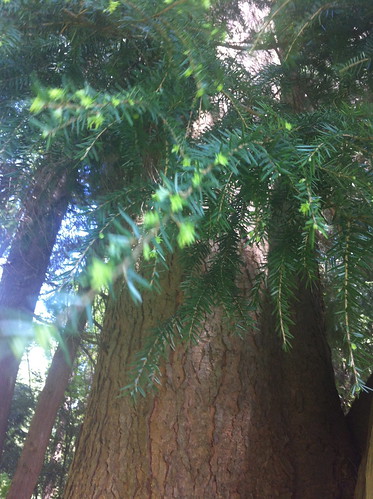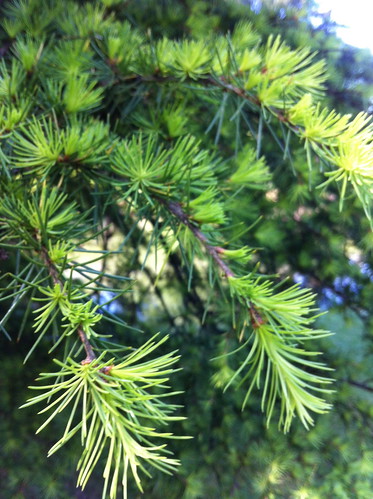Budding Needles
Conifers were not made equal, and some were better suited for this purpose. Notably, Douglas fir and some types of spruce produces the most delightful young needles: tender like sprouting wheatgrass; and soft like a silky tassels. But of course what's most important is their aromatic and flavour profile: look for spring tips that have a delightful refreshing yet sweet aroma, reminiscent of lemon zest and tangerine peel and a breath of forest after rain.
How can you tell which ones to pick? If you don't know the specific species, use your senses to assess the tea potential of these spring forest buds. Rub them between your fingers and inhale. If the scent appeals to you, that's a good start. But what's most important is the taste. Don't hesitate to nibble on some (they should be soft and tender when you pick them, so don't worry about puncturing your cheeks...). If they taste acrid, dry and bitter - forget about them. If they are slightly tart, delicately aromatic and leave only very little dryness in your mouth this would also be your experience when you brew them into a tea.
The tips pictured above are of Cedar of Lebanon (taken at the Van Dusen Botanical Garden). These look pretty and feel soft; but don't have any of the qualities you'd want in a forest-foraged-tea. Below are Douglas fir spring needle tips. They are very short and require a lot of work to harvest; but their aroma is superb! And to boot, they are rich in vitamin C, which would be a wonderful supplement for your immune system in the spring or any time of the year.

Once picked, spread the needle tips or "tassels" on a tray to thoroughly dry in the shade: away from light, heat and, of course, humidity. Once they are thoroughly dry, store in an airtight container and steep in boiling water to make a delicious, fragrant tea (1 tsp per 250ml) that can be served warm or chilled.




